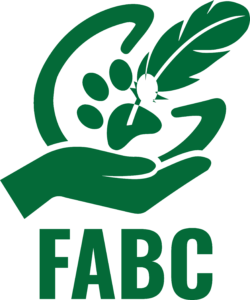
Optimising Covid-19 Consulting from the Patient’s Perspective
The times are certainly a-changing… and although we might understand the rationale and respect the need for change, there is no way to explain to our patients why the world around them, both inside and outside the home, has changed so dramatically.
Of our smaller companion animals, we might expect dogs to be most affected as cats are likely to have greater autonomy during outdoor activity – although cat owners are reporting changes in behaviour within the home, such as proximity and attention seeking, possibly related to increased owner presence and solicited interaction.
Key changes that might present challenges for pets include:
- increased owner presence and interaction – risking development of separation-related behaviour once owners begin to leave the home for longer
- reduced rest/sleep – risking reduced concentration and memory as well as increased irritability
- lack of visitors – risking increased arousal, excitement or worry when visitors eventually return
- increased deliveries – intermittent interruptions to rest which also risk increased arousal connected to the doorbell
- social distancing – risking worry or frustration as interactions with people and other animals outside the home do not occur as expected
- mask-wearing – risking worry or frustration through restricted ability to learn about how we’re feeling and our intent through reading human facial emotional expression
- street-queuing – risking worry or frustration through environmental change
And that’s before they need to visit the vet and experience clinical examination, potentially in the absence of their owner’s emotional, social and physical support! ‘Situation-stacking’ is a term used to describe the accumulative effect of experiences that an animal finds arousing in some way, whether exciting/worrying/stressful, happening in succession without the animal having sufficient time to ‘recover’ in between. Situations stack up, each moving the animal closer to a point at which they may appear to suddenly not be able to cope with whatever is happening… so by the time a patient presents for consultation they may well be nearing this point!
A dual-pronged approach to improve the experience for them involves making changes to our own practice while encouraging owners to help prepare their pets for vet visits.
Actions veterinary professionals can take to help make vet visits easier for patients
Empathy – it always comes back to empathy! Setting everybody up for success by taking a moment to pause in between each consultation in readiness to turn our full attention to the next, reflecting on how the owner and patient might be feeling at the animal being handed through the doorway while the owner remains outside, and preparing to provide reassurance to both client and patient. Ask the owner if the pet has a nickname that is generally used and bring in something of the owner’s or the pet’s own blanket if possible, for olfactory support.
Acclimatisation time – although it might feel counter-intuitive to time/workload pressure, taking the time to allow the pet to just take in the sights, sounds and smells of the veterinary environment is likely to positively influence the medical assessment. For dogs, without social support, being able to obtain environmental information will be incredibly important so where possible permit a dog to sniff the consulting room before beginning any interaction. Aim to keep leads loose to avoid creating tension around the airway or body. Some cats might also want to explore and be quick to leave their basket, or they might need to be encouraged to leave the basket because they have soiled it, so ensure the room is safe for them to do so. Be careful that if cats hide away they are not forcibly drawn out of their carrier. Remove the upper part of the carrier and cover the lower half with a towel for the cat to hide beneath, then if necessary to facilitate examination, their bedding may be gently slid forwards with the cat remaining hidden.
Dogs on floors and cats on tables and in the lower halves of their carriers where possible – this avoids unnecessary lifting of dogs and provides them with a choice to move away, as they are likely to feel increased vulnerability up on a table. Cats who appear very scared might also benefit from a towel positioned across the lower half of their carrier to provide additional opportunity to hide while assessment is carried out. Small furries could be examined in the lower halves of their carriers while remaining on the floor to provide choice and reduce stress related to being at height.
Minimal restraint as a starting point – taking time to introduce yourself to the patient in terms of allowing them the opportunity to communicate whether they feel comfortable or curious enough to approach you first. Beginning examination right away removes any feeling of choice the animal has and might lead to sudden panic. Performing examination, where necessary, incrementally allows the patient to feel a little more in control and able to predict what is happening. Ask the owner where the animal usually enjoys being handled, or not!, so you can work with the patient’s individual sensitivities. It can help to move around the patient too, rather than remain on ‘our side of the table or patient’, to avoid additional unnecessary manipulation involved in turning them around.
Using food as a reward/distraction, unless contraindicated – can be helpful to create a positive association with being handled but be aware that as well as inappetence, food-refusal may indicate an animal feels unsafe. Although owners can be asked to provide their pet’s favourites, it can help to have a variety of treats available, as using especially valued treats will help to create positive associations with clinician, clinical environment and handling procedures. Think about a child’s response to being given a lollipop when seeing the doctor – they wouldn’t be quite so enamoured with a piece of dry toast! To build the positive connection with being examined, use food during the incrementally performed examination, making sure it is available immediately once hands are placed upon the patient, and stop feeding during breaks and once assessment is complete. The aim is that the patient readily and comfortably engages with the food while still feeling able to move away or communicate they wish to stop should they feel uncomfortable. Signs an animal is eating while stressed might be snatching or grabbing at the food, as well as changes to their body posture and expressions.
Observe the patient for signs of increasing discomfort – stop and let them have a breather and, if necessary, consider rebooking the appointment using anti-anxiety medication or sedation to avoid escalation to the point where the animal feels they have no option but to behave aggressively in attempt to stop the interaction. Test your observational skills with these useful links to understanding body language:
http://www.bristol.ac.uk/vet-school/services/behaviour-clinic/dogbehaviouralsigns/
https://icatcare.org/advice/cat-communication/
https://www.rspca.org.uk/adviceandwelfare/pets/rabbits/behaviour/understanding
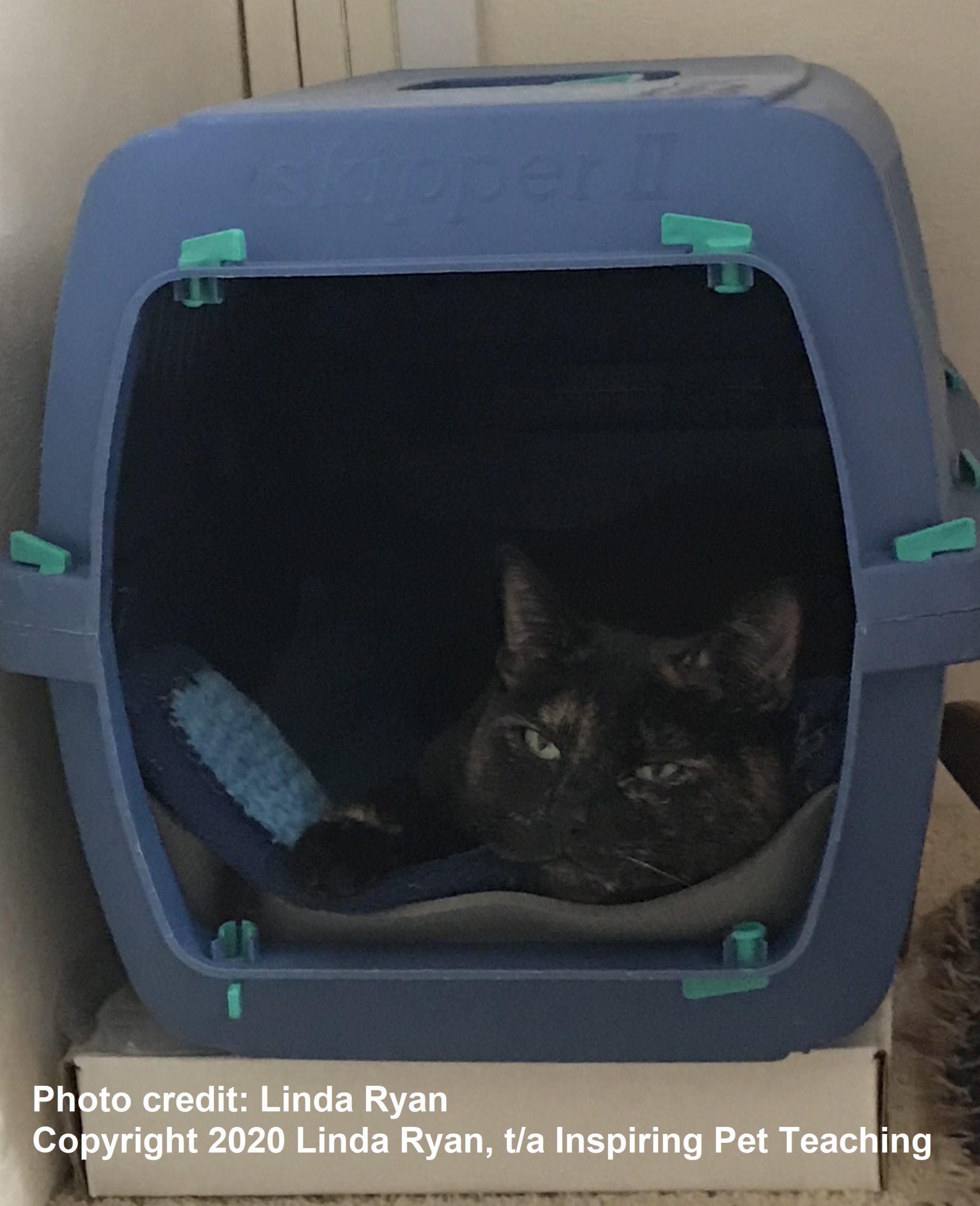
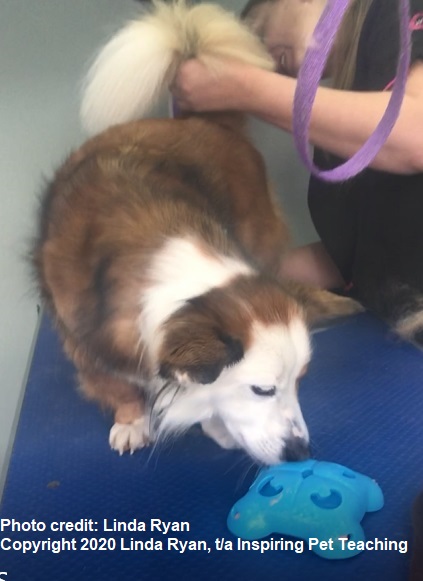
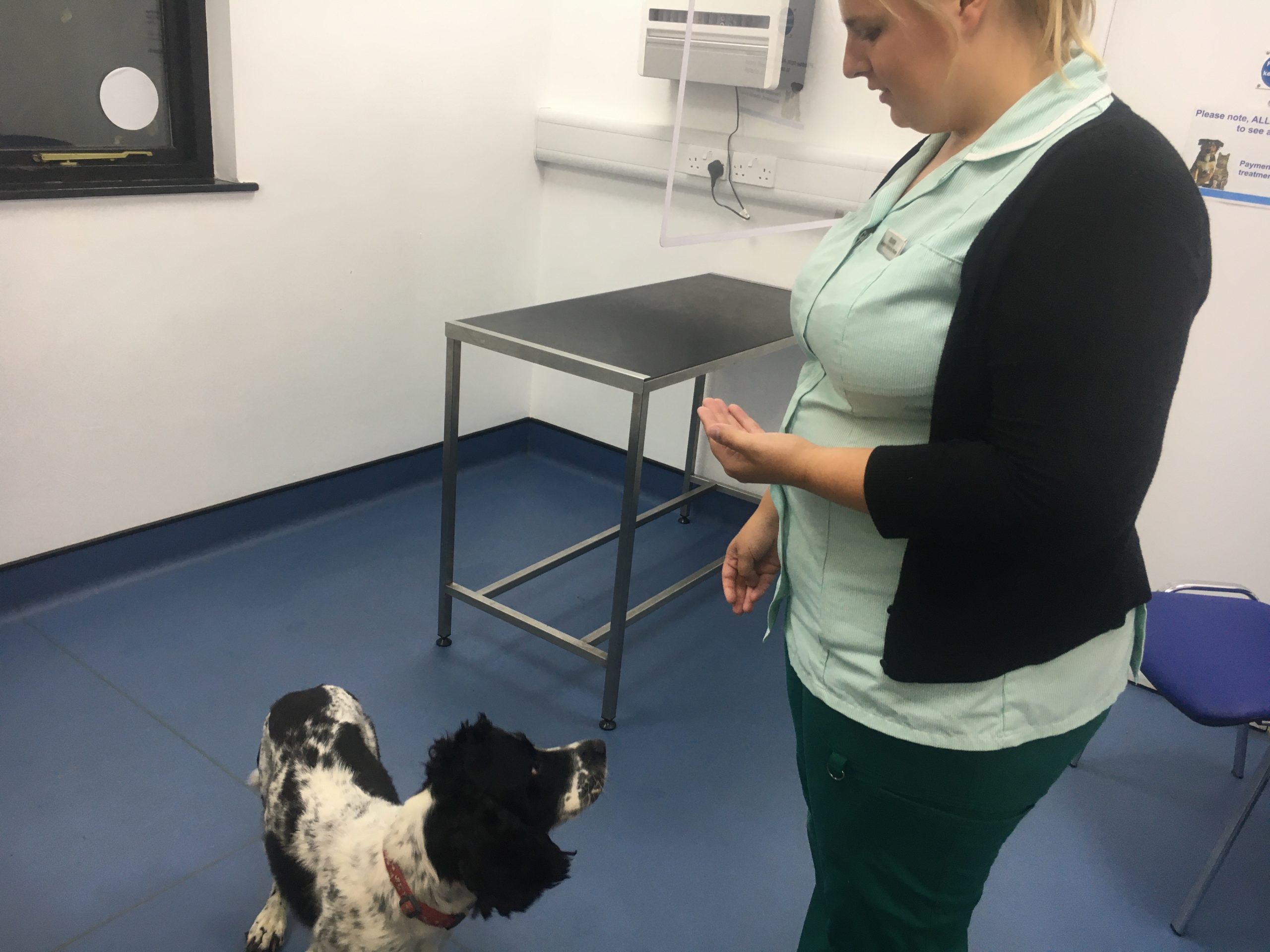
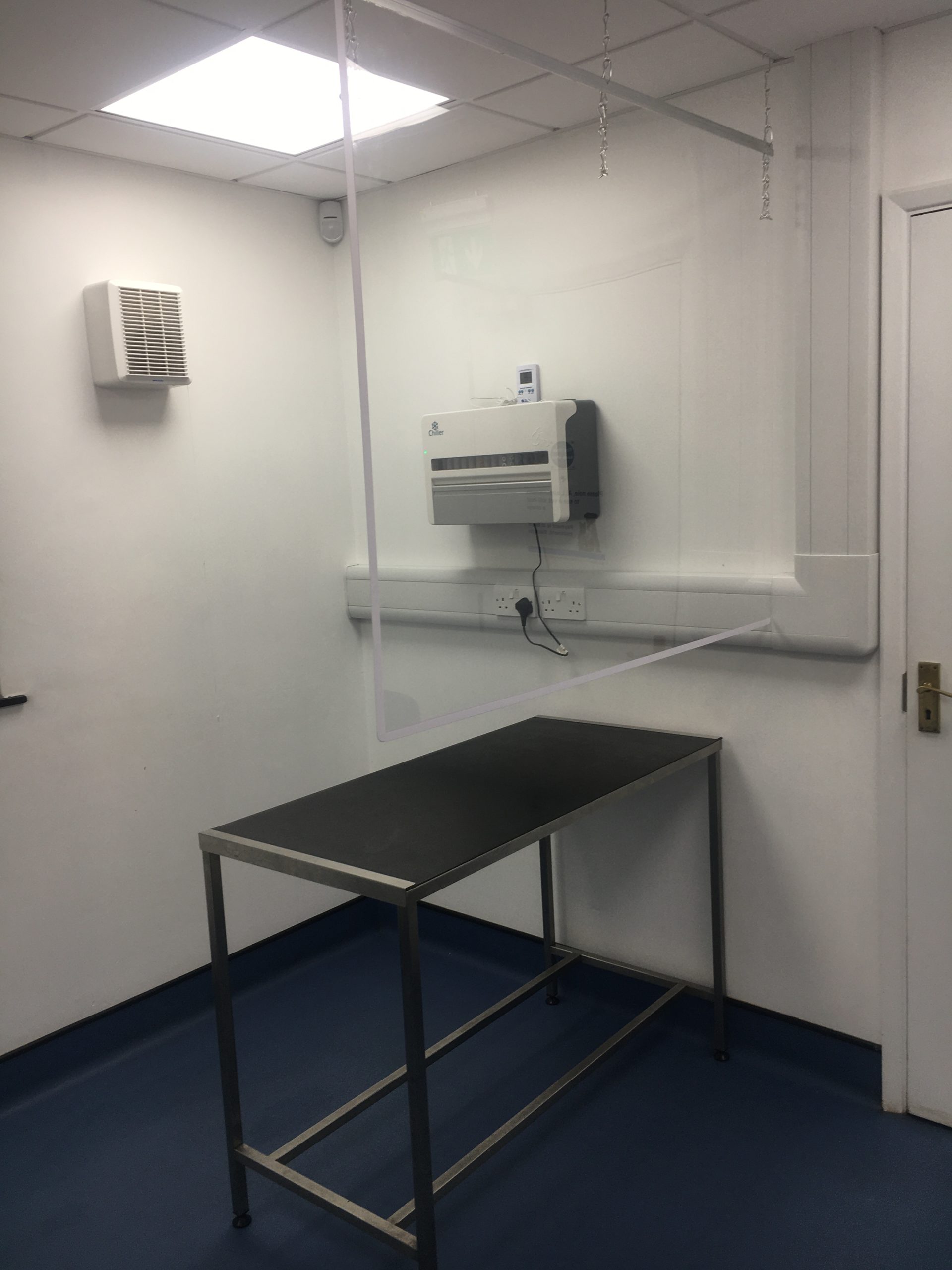
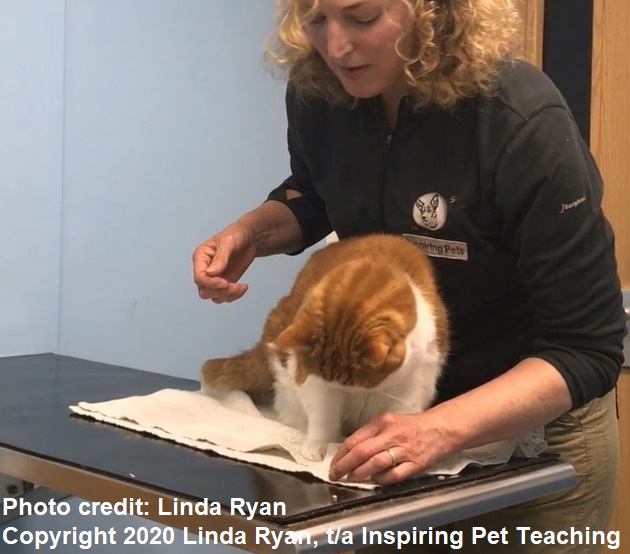
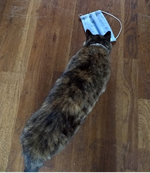
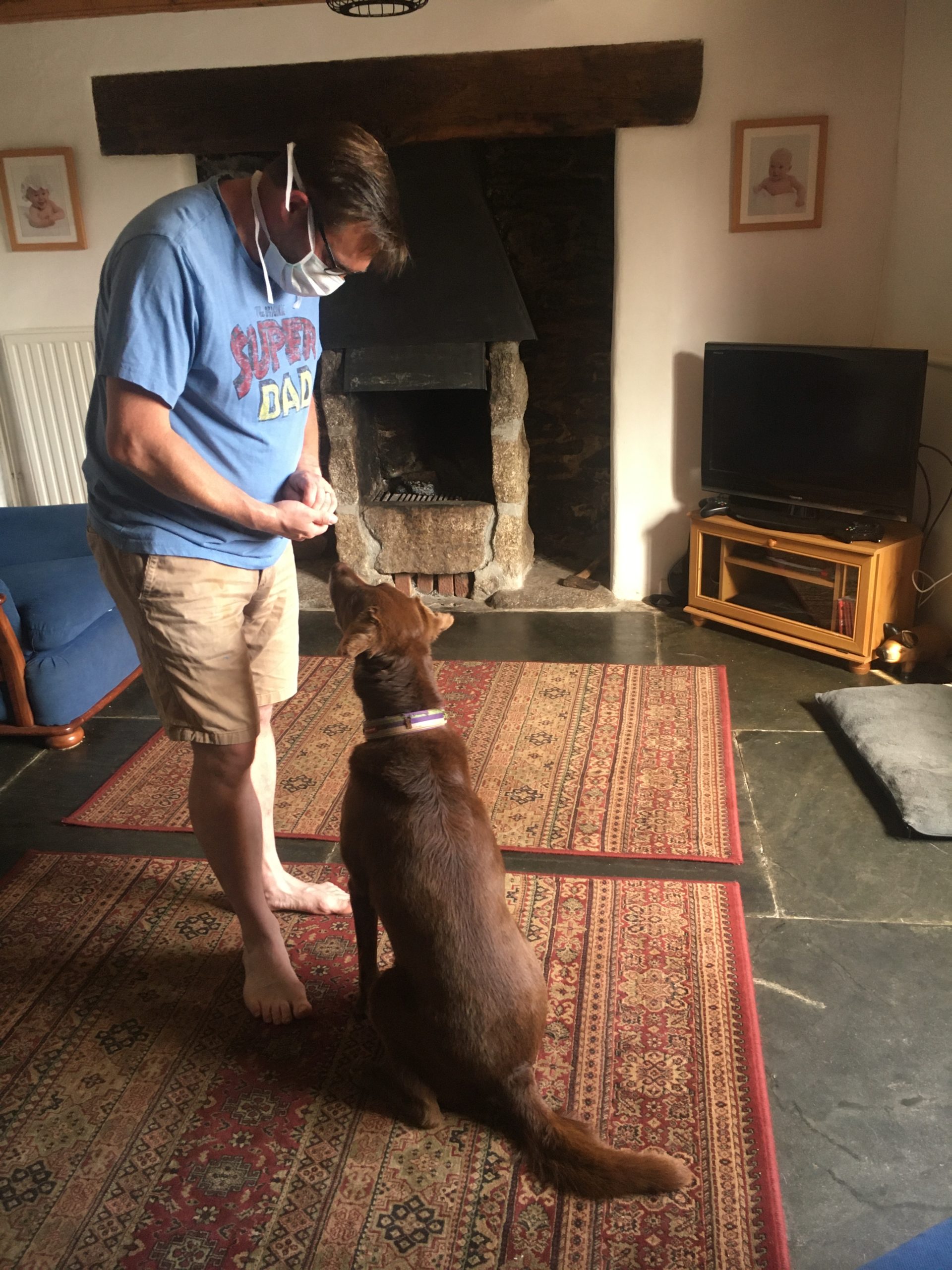
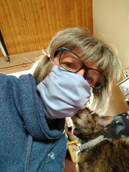
Actions we can encourage clients to take to help make vet visits easier for their pets
The good news is there are many ways in which owners can help, and FABC are continually adding to our helpful resource-pool for your clients!
An appointment checklist – when booking routine consultations over the phone or, if your practice sends appointment reminders by text, you have an opportunity to remind your clients to prepare their history/observations/concerns and a list of questions which can be handed over with the patient, including bringing along any relevant medication, something that smells of home and their pet’s favourite food-treats unless sedation/general anaesthesia is required or likely. Owners transporting their pets in carriers can be asked to provide covering to reduce visual exposure to other animals, people and any stimuli that might increase arousal and/or anxiety. When booking appointments, it can help to create a culture of routinely asking owners about how their animal behaves at the vet clinic, to both help prepare the clinical environment and to prompt owners to consider how their pet feels about the experience. Veterinary receptionists can also be instrumental in highlighting any causes for concern in advance of appointments.
Preparing to wait outside – we can all appreciate queuing can be boring or frustrating or even make us feel anxious and pets are no different, especially as they don’t necessarily understand what they’re waiting for. Dogs might be distracted by long-lasting treats such as snuffle-mats, licki-mats, food-releasing toys or even just a slow, steady delivery of treats, however any pet might benefit from waiting in the car (with air con where necessary) or at a greater distance from anyone else waiting outside the veterinary clinic. Avoiding unplanned or non-consensual interactions between dogs and any other people or animals while waiting outside removes these potential situation-stacking situations prior to the consultation which might increase arousal levels or create conflict, for example should a dog be worried by other dogs, or become interested in another receiving treats. An established waiting system might also help to reduce owner anxiety too, which in turn is likely to provide the patient with reassurance. Where necessary it might also be helpful to be able to provide coverings, such as towels, to block direct visual contact from other animals – however should this be necessary, especial diligence must be taken regarding minimising risk of C19 spread through surface contact and any coverings handled and washed, or disposed of, appropriately.
Introducing their pets to seeing people in facemasks – this is important if the practice team are likely to be interacting with clients and consulting wearing facemasks. We have created a helpful guide for pet owners on how to safely introduce facemasks and other types of Personal Protective Equipment
Teaching their pet to be handled with confidence – a pet who feels comfortable and confident about being handled, lifted and restrained by their owner in a familiar setting, has a good foundation for understanding what is happening when someone unfamiliar does the same in a different environment. Our YouTube resource link is the perfect place to signpost clients to for clear, supportive video guidance on how to safely introduce a variety of helpful activities, such as being handled or learning to feel good about being inside the carrier, that enable pets to have improved experiences at the vet clinic!
Why not check out the videos yourselves so you can be confident in the information you’re sharing with clients and using handling techniques aimed at optimising the experience for patients.
Your clients, and most importantly your patients, will thank you for the extra care, attention and empathy you show them – and in a world where we can all appreciate what if feels like to be faced with the unpredictable, this empathetic approach will help to create lasting bonds!

